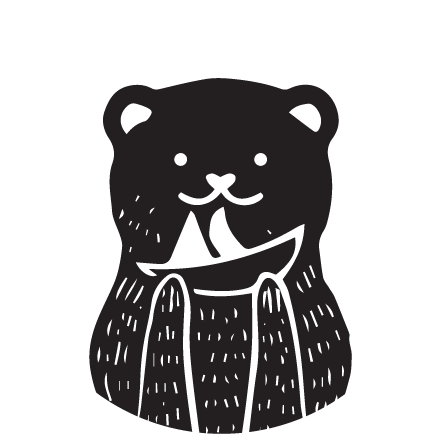A middle power in global affairs, Morocco is the fifth largest economy in Africa and holds significant influence in both the African and Arab worlds.
It overlooks the Mediterranean Sea to the north and the Atlantic Ocean to the west. With a population of about 37 million, Morocco is mainly Islamic. Arabic, Berber, and French are the official languages. Rabat is the capital and Casablanca its largest city.
In this land which has been inhabited for over 300,000 years, here are our top 10 things to do in no particular order.
1. Groove to the tunes of Gnawa (Gnaoua) Music and Dance
No visit to Morocco is complete without witnessing Gnawa, a soul-shaking blend of music, dance and poetry that traces its roots back to the mediaeval communities of sub-Saharan Africa.
Gnawas have long roots in the mediaeval Sudanic Empires – the part of West Africa that now includes Senegal, Mali, and Guinea – and were ethnically marginalised as a result.
But things have begun to change: in modern, increasingly multicultural Morocco, their sub-Saharan origins are celebrated. Essaouira, the diverse city they’ve adopted as their capital, is the best place to catch an authentic Gnawa performance. Essaouira’s yearly Gnawa Music Festival is a three day must experience extravaganza.
In December 2019, UNESCO added Gnawa culture to the Lists of Intangible Cultural Heritage of Humanity.
2. Make bread in Meknès
Baking is a daily ritual in Morocco, a country where bread is so treasured it would be an affront to waste a morsel. Traditionally, it’s a wife’s job to make khobz, golden-brown loaves that can be as small as a saucer or as big as a dustbin lid. They’re puffier than flatbread and, torn apart, they’re perfect with a steaming tagine. While most homes have their own wood-fired oven, some Moroccans prefer to hand-mix, knead and shape their dough at home then take it to a faran (community oven), where the baker will cook it on the spot. Riad Lahboul, in Meknès, is one of several places offering courses that teach the entire break making process.
3. Wander through Aït Benhaddou
Aït Benhaddou is a UNESCO World Heritage Site that looks like it’s carved from the mountain itself.
In the past, this small village, known locally as an Ighrem, was a crucial stop for traders crossing the Sahara. The earthen clay architecture and narrow, winding alleys give you a feeling of a bygone era.
Despite the village’s sparse population, it still has a striking beauty. The intricately designed kasbahs and houses have been preserved meticulously.
Interestingly, Aït Benhaddou has also been featured in Hollywood movies like “Gladiator,” “Game of Thrones,” and “The Mummy,” adding to its cinematic allure. Its history dates back to the 11th century, and serves as a reminder of Morocco’s rich culture.
Walking through this ancient village, you can almost hear the echoes of the past traders. Views of the surrounding landscape are breathtaking from the hilltop granary.
4. Stroll through Rahba Kedima, Marrakech
Rahba Kedima, known as Spice Square, is one of the most intoxicating souks in Marrakech’s walled Medina. In this bustling plaza, you’ll find stalls and hole-in-the-wall shops selling everything from star anise to cinnamon sticks to saffron. Its centre is bustling with vendors selling argan oil and plant-based cosmetics.
With its vibrant atmosphere, Rabba Kedima has been central to Marrakech’s trade history for centuries. This former slave market and trading hub serves as a symbol of Marrakech’s rich cultural heritage today.
The aromatic spice mix — ras el hanout, which contains 30 spices — is particularly good. Each vendor’s blend includes cardamom, nutmeg, anise, mace, cinnamon, ginger, various peppers, and turmeric. It is a quintessential souvenir of any Moroccan adventure.
One of the popular items sold here is argan oil, which is commonly referred to as “liquid gold.” It’s derived from argan trees native to Morocco and used for culinary and cosmetic purposes. A traditional technique passed down through generations involves Berber women hand-cracking the nuts between stones to produce argan oil.
5. Explore the flavours of Chefchaouen
In Chefchaouen (often abbreviated as “Chaouen”), you’ll be greeted to one of the most chill, laid back towns in Morocco. Although Chaouen has long been famous as a backpacker’s destination, it is now becoming a major travel destination of its own. Chaouen is a respite from the busy medinas of Fez and Marrakech. However, travelers looking for a bit more authentic will find it interesting. Day hikes into the mountains are easily accessible. And boutique shops for everything from hand-spun pottery to soaps made locally are hassle-free.
On a meander through the narrow lanes of Chefchaouen painted cornflower blue, you’ll work up an appetite by browsing the wares at grocer’s shops, fruit stalls and street food spots, nibbling on bread, cookies, dates, olives, goat’s cheese, walnuts and whatever fruit is in season, which could be oranges, pomegranates or persimmons.
6. Souvenir to Take Home
Those looking for unique and culturally rich souvenirs will love Marrakesh. Morocco’s artisanal heritage is evident in the city’s souks, or markets. Carpets, textiles, and traditional pottery all captivate visitors with their intricate designs.
Moroccan argan oil, derived from the argan tree, is a popular souvenir. Argan oil has nourishing properties and is used in cosmetics and food. Visitors often bring back bottles of this liquid gold as a souvenir.
Argan oil is a prized commodity but don’t be swayed by the lure of “argan cooperatives,” especially not in the city. To get good quality, test the oil by giving the bottle a shake. If you see bubbles at the top, then it’s been cut with another oil. Pure argan won’t do this.
7. Run the Marathon de Sables, Morocco
Dubbed by the Discovery Channel as the most difficult footrace in the world, the Marathon de Sables is a masochist’s paradise involving 156 miles of running across hot sand. First held in 1986, the ultra-marathon takes place in the Moroccan Sahara and requires racers to be self-sufficient (they must carry all food, water and supplies) to survive the six-day event.
Coupling this with temperatures that frequently surpass 40C, the Marathon de Sables is as much a test of mental strength as it is of physical endurance.
Fact: Following a particularly bad sandstorm in the 1994 race, former Olympian pentathlete Mauro Prosperi was lost in the desert for 10 days. He was eventually found in Algeria, 186 miles off route and 18 kg lighter.
He survived by drinking his own urine and the blood of bats before being rescued by the Algerian military.
8. Sip Mint tea
The quintessentially Moroccan ritual of handing out glasses of hot herbal tea is a convivial way to say ‘hello’. Chef Tarik Orty’s Atelier de Cuisine cookery school, near Tadouarte, is one of several places where you can learn about this archetypal pick-me-up, made by boiling Chinese gunpowder green tea with fresh herbs to bring out the flavours, then pouring from a height to aerate the top.
Besides mint, other fragrant leaves such as thyme and lemon verbena may be included, depending on the region and season.
Sugar, once considered essential, tends to be optional in these more health-conscious times.
9. Visit a Hammam
Volubilis has the ruins of the first known Islamic hammam in Morocco, dating back to the late 8th century. In cities like Marrakesh and especially Fes, many historic hammams have been preserved because locals still use them.
This traditional Moroccan bathhouse is a must-see. Using an olive pit soap, an exfoliating mitt, and copious amounts of warm water, you’ll be scrubbed from top to bottom. There are hammams everywhere, whether you want a luxury spa experience or a neighbourhood version. It’s a part of Moroccan culture that hasn’t changed in centuries.
10. Try Local Wines
With its high mountains and the cooling influence of the Atlantic, Morocco has the best natural potential for producing quality wines because these factors keep vineyards from getting too hot. A major exporter of wine in the colonial era, Moroccan wine is experiencing a revival and expansion since the 1990s, thanks to foreign investments
Even though alcohol is forbidden in Islam, Morocco’s winemaking heartland has thrived around its most sacred cities, originating from vineyards established during the French protectorate (1912-1956).
Try wines from local wineries like Chateau Roslane near Fez, whose complex signature Cabernet Merlot is a standout, as well as Sauvignon Blanc-Chardonnay blend from Volubilis, a dry rosé blush from Meknes, and a peppery Syrah from Casablanca.
We hope this gave you an idea of what Moroccans are known for and what you can do there. It would be best to add a few extra days to explore Morocco’s vibrant cultural sights and sounds, and then relax by the sea.
Ping us in case you would like to get customised recommendations on where to stay and what to see. Fun fact: Yves Saint Laurent once owned Marrakech’s famous Jardin Majorelle – one of the most enchanting and mysterious gardens of Morocco!


